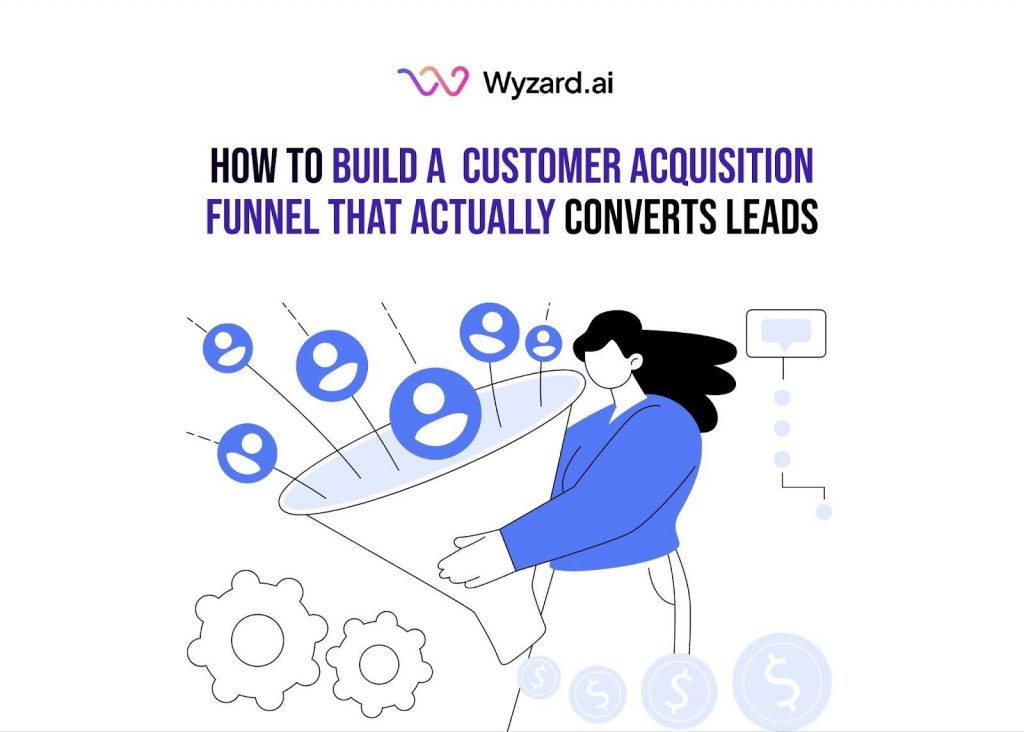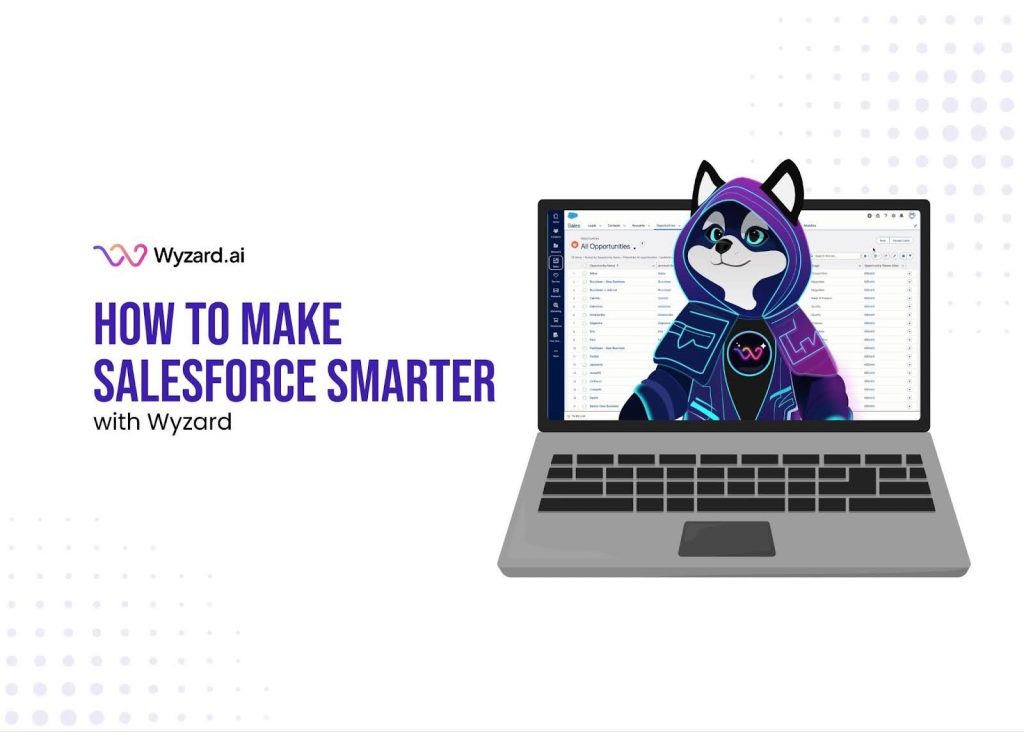You're generating traffic. Leads are visiting your website. But conversions? They're barely moving the needle. The problem isn't your ...
What Are the Stages of Customer Journey? A B2B SaaS Guide to Pipeline Growth


Subscribe Now
You’re tracking website visitors, running campaigns, and scoring leads, but are you truly understanding how buyers move through each stage before they become customers? For mid-market B2B SaaS teams, mapping the stages of the customer journey isn’t just theory; it’s the difference between scattered touchpoints and a coordinated revenue engine.
When buyer signals scatter across email, web, ads, and CRM, GTM teams lose the thread. That moment when a prospect downloads your whitepaper, revisits your pricing page, or responds to an email? Those aren’t isolated events; they’re stages in a journey that, when orchestrated correctly, turns intent into closed deals.
This guide breaks down each stage of the B2B customer journey, explains how to recognize and act on buyer signals at every phase, and shows how to connect the dots without adding headcount.
What Are the Stages of Customer Journey?
The stages of the customer journey describe how potential buyers progress from first awareness to becoming advocates. Unlike consumer purchases, B2B customer journeys involve multiple stakeholders, longer decision cycles, and touchpoints spread across tools and channels.
The five core stages are:
Awareness: Buyer recognizes a problem and starts researching solutions
Consideration: Buyer evaluates options and compares vendors
Decision: Buyer selects a vendor and commits to purchase
Retention: Customer adopts the product and experiences ongoing value
Advocacy: Satisfied customers recommend your solution to others
These stages aren’t always linear. B2B buyers loop back, pause, and jump ahead based on internal priorities, budget cycles, and committee dynamics. The key is recognizing where each account sits and responding with the right message at the right time.
Stage 1: Awareness — When Buyers First Recognize the Problem
Awareness begins when a potential buyer realizes they have a challenge worth solving. Maybe their current process is breaking down, or a new initiative demands better tools. At this stage, prospects aren’t shopping; they’re researching the problem itself.
How Buyers Behave in Awareness
- Search for educational content (guides, blog posts, explainer videos)
- Attend webinars or industry events
- Ask peers for recommendations
- Download templates, checklists, or frameworks
What GTM Teams Should Do
Your goal isn’t to pitch, it’s to educate. Create content that defines the problem, frames the cost of inaction, and positions your category as the solution. Think fewer product demos, more “here’s why this matters” content.
Capturing buyer signals at this stage means tracking who’s engaging with top-of-funnel content. When someone downloads your guide or attends your webinar, that’s a signal worth noting—but not yet a reason to hand them to sales.
Stage 2: Consideration — Evaluating Solutions and Comparing Options
Once a buyer understands the problem, they enter the consideration stage. Now they’re actively comparing vendors, reading reviews, and building internal business cases. This is where B2B customer journey complexity spikes, and multiple stakeholders enter the conversation, each with different priorities.
How Buyers Behave in Consideration
- Visit competitor comparison pages
- Read case studies and ROI calculators
- Request product demos
- Engage with sales development reps
- Share content internally with decision-makers
What GTM Teams Should Do
Your job is to make the evaluation easier. Provide comparison resources, detailed use cases, and transparent pricing information. Remove friction at every step, complicated forms, vague messaging, and slow follow-up kill momentum.
Customer journey touchpoints multiply here. A prospect might hit your website, open an email, attend a demo, and check your G2 profile, all in one week. Without visibility into these signals, you’re flying blind.
This is where customer journey orchestration becomes critical. When a buyer revisits your pricing page after watching a demo, that’s a buying signal. When they forward your case study to a colleague, that’s the intent. But only if you’re capturing and acting on those moments.
Stage 3: Decision — Closing the Deal Without Losing Momentum
The decision stage is where buyers commit. They’ve narrowed their options, aligned internally, and are ready to move forward. Your job is to make saying “yes” as simple as possible.
How Buyers Behave in Decision-Making
- Request final proposals and contracts
- Conduct internal stakeholder reviews
- Negotiate terms and confirm implementation timelines
- Validate security, compliance, and integration requirements
What GTM Teams Should Do
Speed matters. Delayed responses, unclear next steps, or missing information can stall deals or, worse, send buyers back to consideration. Automate where possible: contract generation, onboarding instructions, and follow-up sequences should trigger automatically once a deal reaches this stage.
End-to-end customer journeys don’t stop at the handshake. The transition from signed contract to active user is part of the journey, and where many B2B teams drop the ball.
Stage 4: Retention — Turning Customers Into Long-Term Partners
Retention starts the moment a contract is signed. The goal is simple: ensure customers adopt your product, see value quickly, and renew when the time comes.
How Customers Behave in Retention
- Complete onboarding and training
- Integrate your product into daily workflows
- Raise support tickets and feature requests
- Track usage and ROI metrics
What GTM Teams Should Do
Proactive engagement beats reactive firefighting. Monitor product usage, identify accounts at risk, and intervene before churn happens. Automated check-ins, usage-based alerts, and milestone celebrations keep customers engaged.
Customer journey automation shines here. When a customer’s usage drops, trigger an outreach. When they hit a key milestone, send a success message. When renewal approaches, start the conversation early, before budget season chaos begins.
Stage 5: Advocacy — When Customers Become Your Best Salespeople
Advocacy is the final stage, where satisfied customers actively recommend your product. These customers write reviews, refer colleagues, and participate in case studies. For B2B SaaS companies, advocates reduce acquisition costs and accelerate the pipeline.
How Advocates Behave
- Leave positive reviews on G2, Capterra, and peer networks
- Refer colleagues and peers
- Participate in customer advisory boards
- Co-present at webinars or events
What GTM Teams Should Do
Make advocacy easy. Create referral programs, request testimonials at the right moment, and celebrate customer wins publicly. Don’t wait for customers to volunteer; ask directly.
Track advocacy signals the same way you track buying signals. When a customer shares your content on LinkedIn or tags you in a post, that’s advocacy in action. Recognize it, reward it, and nurture it.
Why Customer Journey Touchpoints Matter More Than Ever
Every email open, website visit, demo attendance, and content download is a customer journey touchpoint, a moment where buyers engage with your brand. In B2B, these touchpoints scatter across tools: marketing automation platforms, CRMs, ad networks, and chat systems.
The problem? Most teams can’t connect the dots. A prospect might engage with five touchpoints before booking a demo, but if those signals live in separate systems, you’ll never see the pattern.
Wyzard.ai solves this by capturing buyer signals across channels and orchestrating follow-ups in real time. When a prospect downloads a guide, revisits your pricing page, and opens your follow-up email, Wyzard connects those moments and triggers the next action automatically.
How Customer Journey Orchestration Drives Pipeline Efficiency
Customer journey orchestration means coordinating actions across tools, channels, and teams based on where buyers are in their journey. Instead of treating each touchpoint as isolated, orchestration connects them into a coherent experience.
Here’s what orchestration looks like in practice:
| Stage | Buyer Action | Orchestrated Response |
| Awareness | Downloads guide | Auto-enroll in the nurture sequence |
| Consideration | Attends webinar | Send case study, schedule demo, offer |
| Decision | Revisits pricing page | Alert sales, send proposal template |
| Retention | Usage drops | Trigger check-in email |
| Advocacy | Leaves a positive review | Send a thank-you note, request a referral |
Without orchestration, these actions happen manually or not at all. With orchestration, they happen automatically, at the right time, without requiring more headcount.
Common Mistakes That Break B2B Customer Journeys
Even teams with good intentions make avoidable mistakes:
Ignoring mid-funnel signals: Tracking only form fills misses most buyer activity
Manual handoffs: Relying on reps to update CRM slows everything down
Generic messaging: Sending the same email to awareness and decision-stage buyers wastes opportunities
Siloed tools: When marketing, sales, and customer success use separate systems, the buyer context gets lost
Waiting too long: Following up three days after a pricing page visit is three days too late
The fix isn’t more tools, it’s better orchestration. Connect what you have, automate what repeats, and act when signals appear.
How Wyzard.ai Connects Buyer Signals Across the Journey
Here’s the challenge: buyer signals live everywhere. Your prospect engages with a LinkedIn ad, visits your site, downloads content, and replies to an email, but those signals sit in separate tools. By the time your team pieces them together, the moment has passed.
Wyzard.ai captures every signal in real time, across every channel. When a prospect takes action, Wyzard logs it, scores it, and triggers the next step automatically. No manual updates. No missed opportunities. No delays.
How it works:
Connect your tools: Wyzard integrates with your CRM, marketing automation platform, website, and ad networks
Capture signals live: Every email open, page visit, and content download is tracked in real time
Orchestrate follow-ups: Based on where buyers are in the journey, Wyzard triggers the next action, email, alert, or CRM update
Surface insights: Account timelines show exactly how each buyer has engaged, so your team knows what to do next
Instead of chasing signals across systems, your team sees everything in one place. Instead of reacting days later, you act the moment intent appears.
FAQs
The five stages are awareness (recognizing a problem), consideration (evaluating solutions), decision (selecting a vendor), retention (adopting and using the product), and advocacy (recommending the solution to others).
B2B customer journeys involve multiple decision-makers, longer sales cycles, and touchpoints across many channels. B2C journeys are typically shorter, with fewer stakeholders and faster purchase decisions.
Touchpoints reveal buyer intent and engagement patterns. Tracking them helps teams respond at the right moment, improving conversion rates and reducing wasted effort.
Customer journey orchestration coordinates actions across tools and channels based on where buyers are in their journey. It ensures consistent, timely follow-ups without manual intervention.
Automation removes manual handoffs, triggers follow-ups based on buyer behavior, and ensures no signal gets missed. Teams act faster, close more deals, and scale without adding headcount.
Other blogs
The latest industry news, interviews, technologies, and resources.
How to Make Salesforce Smarter with Wyzard.ai
Your CRM is packed with contacts, but how many buying signals are you missing right now? A prospect just ...

Unlock Real-Time HubSpot Automation with Wyzard.ai
Your HubSpot portal holds valuable data about every lead, deal, and customer interaction. But if you're waiting hours, or ...

 We’ve secured funding to power Signal-to-Revenue AI to GTM teams globally. →
We’ve secured funding to power Signal-to-Revenue AI to GTM teams globally. →


